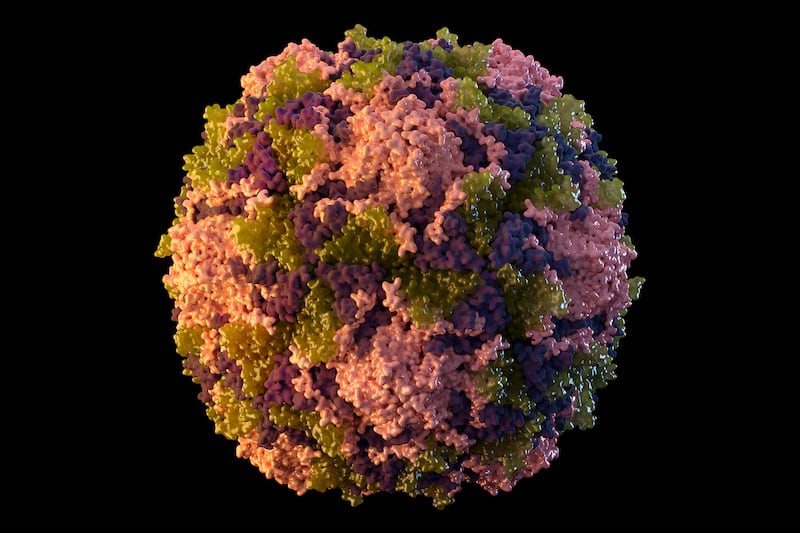Polio has been found in wastewater in New York, suggesting community spread. And health officials are urging New Yorkers to be sure that they are all current on vaccination against the potentially deadly virus.
The New York Department of Health announcement said that after identifying polio in an unvaccinated Rockland County resident last month, the state started monitoring wastewater. It found polio virus in both Rockland and Orange County samples taken at different times and locations in June and July.
“Based on earlier polio outbreaks, New Yorkers should know that for every one case of paralytic polio observed, there may be hundreds of other people infected,” Dr. Mary T. Bassett, the state’s health commissioner, said in a statement.
Health officials said the identified samples may be “the tip of the iceberg.”
About polio
Polio — actually poliomyelitis — is a very contagious virus that spreads through contact with feces and, more rarely, respiratory secretions from someone who’s infected. It lives in the digestive system and throat, but attacks the central nervous system. Those most at risk are children under 5.
The virus is very contagious, spreads person-to-person and can be transmitted by people who have no symptoms. Symptoms may be mild and flu-like and may not appear for up to 30 days — a time in which the virus can be spreading to others.
As The New York Times reported, “Paralysis is a rare outcome, but before vaccines were widely available in the 1950s, polio outbreaks caused more than 15,000 cases of paralysis a year.”
No polio cases have originated in the U.S. since 1979 and the nation has been considered polio-free since, according to the Centers for Disease Control and Prevention. The agency said the virus disabled more than 35,000 people every year during the 1940s and ’50s.
Tracking the virus
The Global Polio Laboratory Network, which was also given the wastewater samples, confirmed that the polio case in New York is genetically linked to samples collected in Rockland County and samples from greater Jerusalem, Israel, and to environmental samples in London, England.
The health department said that doesn’t suggest the New Yorker who got polio had visited either country.
As the Deseret News reported in June, London has been on high alert for polio after “vaccine-derived poliovirus type 2” was found in its wastewater. As The Wall Street Journal explained at that time, that’s “a mutated form of the weakened live virus found in the oral polio vaccine still used in some countries. People who receive the oral vaccine shed small amounts of virus in their feces. In places that lack adequate sanitation, it sometimes mutates to resemble the naturally occurring virus and can infect people who aren’t fully immunized.”
CNBC reported that “the polio strain the adult in Rockland County caught suggests the chain of transmission did not begin in the United States. The strain the individual contracted is used in the oral polio vaccine.”
Since 2000. the only vaccine available in the United States is inactivated poliovirus vaccine (IPV), given through an injection into the arm or leg. CDC says that protects 99% of children who receive the recommended doses.
Vaccination
Polio has no treatment or cure, so focus is on preventing it through vaccination. Polio vaccine is part of the Centers for Disease Control and Prevention’s standard child immunization schedule and is routinely required for school-age children nationwide.
“All New Yorkers who are unvaccinated, including children 2 months and older, those who are pregnant, and people who have not completed their polio vaccine series previously, should get vaccinated right away,” New York health officials said, noting the highest risk of exposure is for those who “live, work, go to school in, or visit Rockland County.”
Rockland County (60.5%) and Orange County (58.6%) have lower polio vaccination rates among 2-year-olds compared to New York’s statewide 79.1% vaccination rate.
Bassett called polio a “dangerous disease with potentially devastating consequences. In the United States, we are so fortunate to have available the crucial protection offered through polio vaccination, which has safeguarded our country and New Yorkers for over 60 years. Given how quickly polio can spread, now is the time for every adult, parent, and guardian to get themselves and their children vaccinated as soon as possible.”


